What Are You Looking For?
How To Read The Battery Charging And Discharge Curve
Oct 09, 2024How To Read The Battery Charge And Discharge Curve
In order to ensure its cycle stability and the safety of users, most of the batteries are operated under closed systems, such as pouch cells and cylindrical batteries.
As a result, the situation inside the battery is like a black box, and we cannot directly obtain the material information inside it, and can only estimate it through external testing. So what tests can provide insight into the electrical "heart"? Battery charge discharge test equipment will do. If you have to have an analogy, then the battery charge and discharge is like the potential energy of the water used by the hydropower station, and the discharge is the "water" of the positive electrode. Estimating the amount of water upstream and adjusting the strategy in time to ensure normal use has become the most important work we need to pay attention to in our daily life, and this amount of water can also be understood as the power of the battery.
Back to the battery, the battery in the process of charging and discharging, with the change of the depth of charge and discharge, the voltage is also constantly changing, if we take the capacity as the abscissa and the voltage as the ordinate, we can get a simple charge and discharge curve, which contains a lot of clues of the battery's electrical performance. These curves are drawn based on the time, capacity, SOC, voltage and other cell parameters involved in charging and discharging, which is also known as the charging and discharging curve. The following is an introduction to several common charge-discharge curves.
Time-current/voltage curve:
1.Constant Current:
When the constant current is charged and discharged, the current is a constant value, and the change of the terminal voltage of the battery is collected at the same time, which is commonly used to detect the discharge characteristics of the battery. During the discharge process, the discharge current remains unchanged, the battery voltage is decreasing, and the discharge power is also decreasing. An example curve is shown in the figure below.
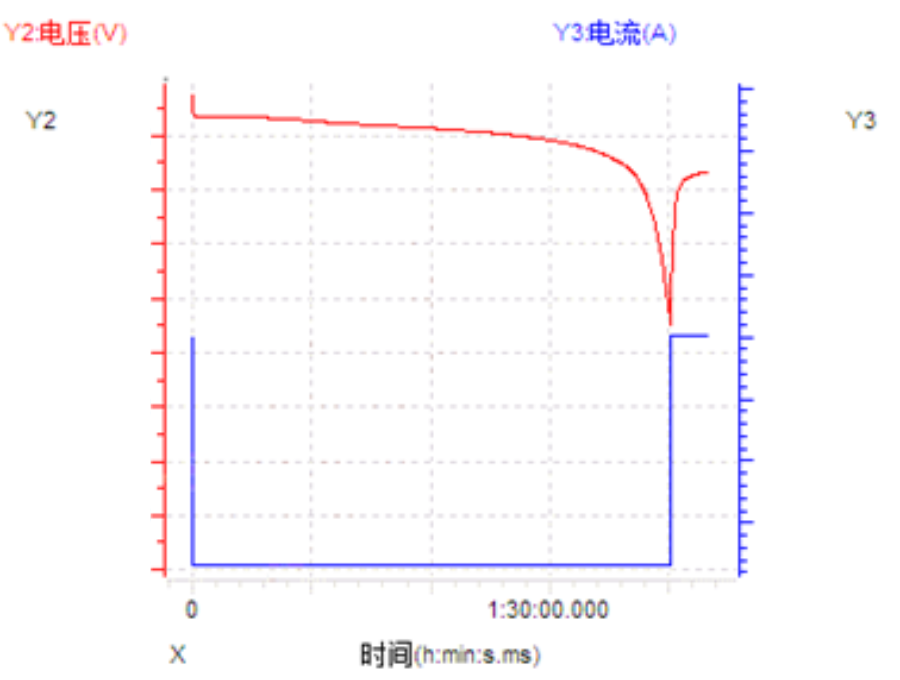
2.Constant current and constant voltage (charging):
Compared with constant current charging, constant current and constant voltage charging has a constant voltage process at the end of the charge. At the end of the charge, when the voltage reaches the target value, it becomes constant, and the current gradually decreases, and the constant current and constant voltage charging ends when the cut-off current is reached. Due to the large fluctuation of the battery voltage after leaving the plateau, if the constant current charging is continued, the battery cannot reach the ideal full state, so it is necessary to switch to constant voltage and reduce the current to ensure that the battery reaches a higher state of charge as much as possible. An example curve is shown in the figure below.
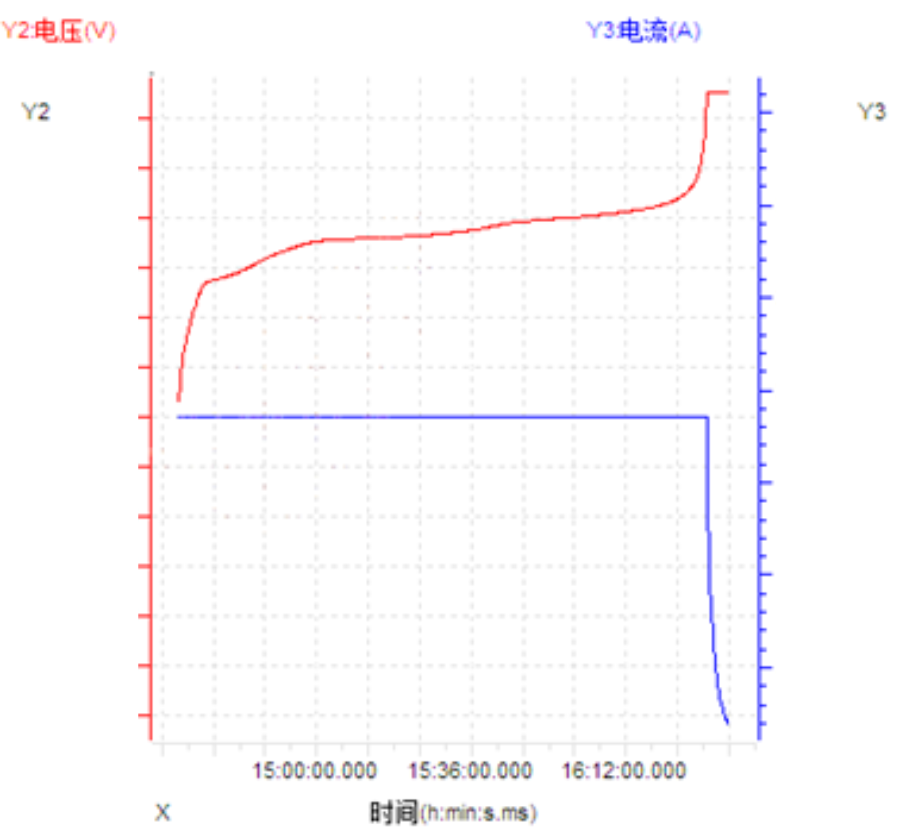
3.Constant power:
The entire charging and discharging process runs at constant power. According to P=UI, the voltage gradually increases and the current decreases when charging at constant power, and the voltage decreases and the current gradually increases when discharged. According to the calculation of the conventional charge-discharge cut-off voltage of 3.65-2.5V of LFP battery, the discharge terminal current can reach nearly 1.5 times of the charging terminal current. An example curve is shown in the figure below.
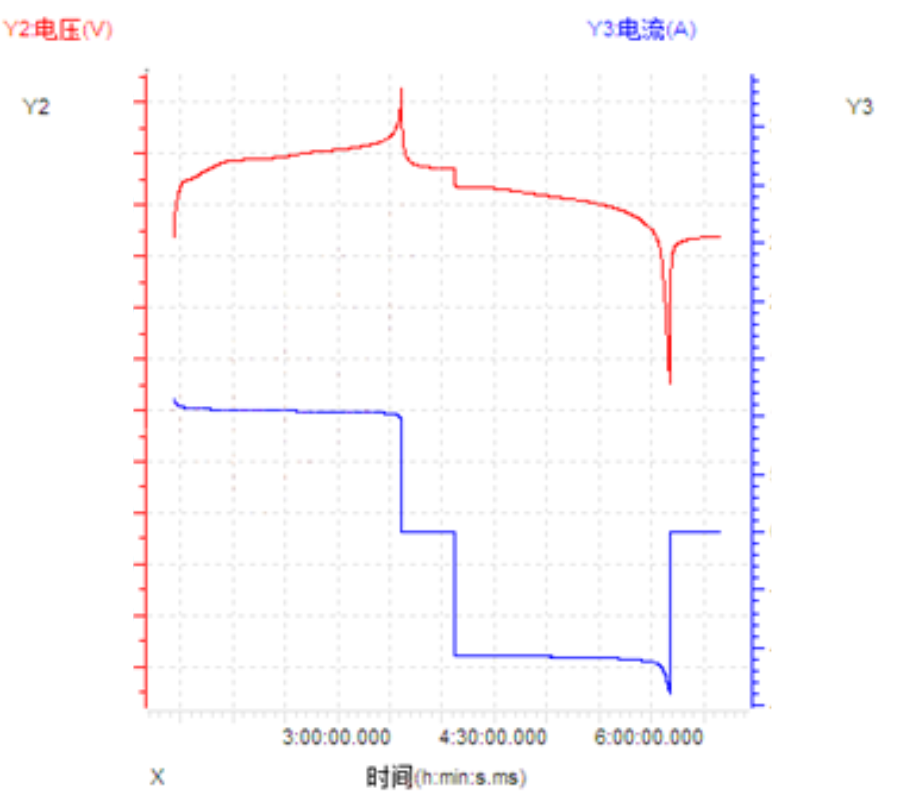
4. Continuous, Intermittent, Pulsed:
While the current or power is constant, the timing function is used to realize continuous, intermittent, and pulse charge and discharge control. These special charge-discharge regimes are often used to evaluate the DC internal resistance of a battery. An example curve is shown in the figure below.
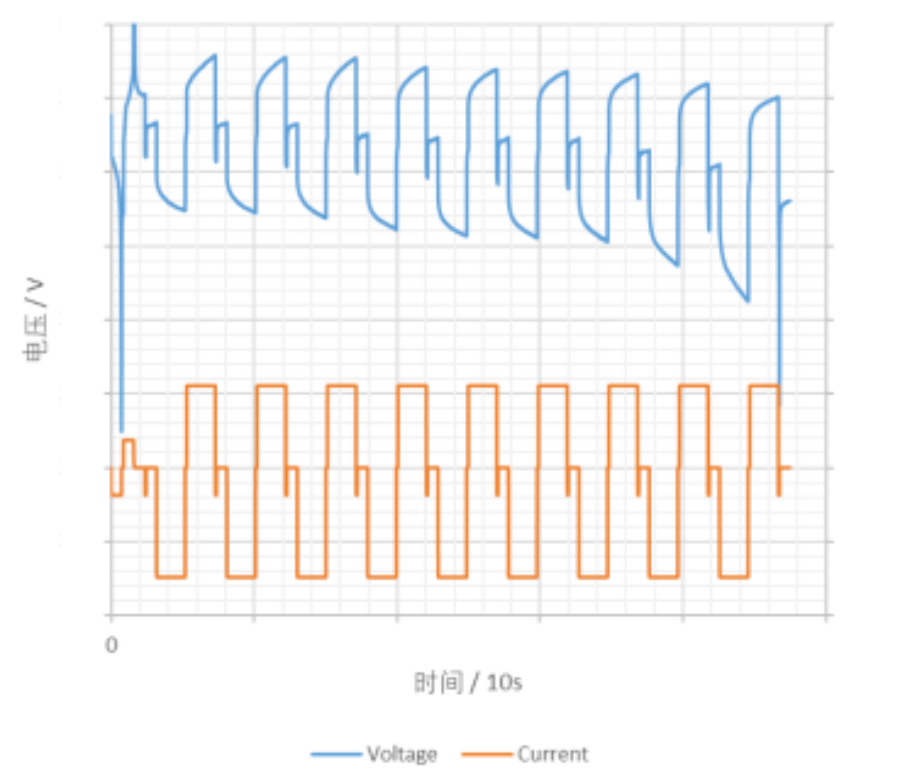
Capacity-voltage curve:
The horizontal axis of the capacity-voltage curve reflects the charging and discharging capacity and state of charge of the battery, while the vertical axis contains the voltage platform, inflection point, polarization and other information of the battery. The following figure is the discharge curve of a lithium iron phosphate battery at different temperatures.
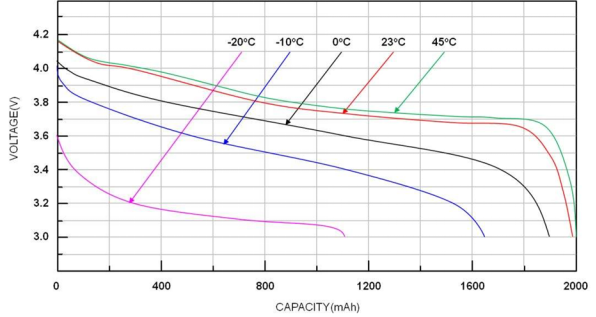
Circular curve:
We know that the life of a battery is divided into calendar life and cycle life. Calendar life is the time when the battery capacity is lost to a certain extent under natural placement, and the cycle life is the number of times the battery is charged and discharged to a certain extent after the battery is continuously charged and discharged. Cycle life is one of the important indicators to measure the performance of battery life. The cycle test data of lithium-ion batteries is based on the accumulation of data from a single charge and discharge by using the battery life cycle testing machine, and different data of a single charge and discharge can be extracted to make a variety of curves for analysis in different aspects. The simplest cycle life curve is based on the number of cycles as the x-axis, and the discharge capacity or capacity retention rate as the y-axis, as shown in the figure below, as the cycle progresses, the capacity of the battery continues to decay, and the charge-discharge system has a significant impact on the battery capacity attenuation.

Understanding the charge-discharge curve and its composition is of great significance for understanding the structure and use of batteries.
Acey new energy is a professional supplier specialized in Lithium Battery Pack Assembly Machine, such as battery capacity grading machine,BMS tester, battery spot welding machine, battery comprehensive tester, battery aging machine, etc and we provide one-stop solution for cylindrical battery pack assembly line. If you need any related equipment, please feel free to contact us.